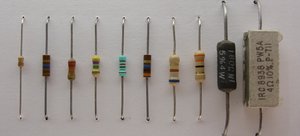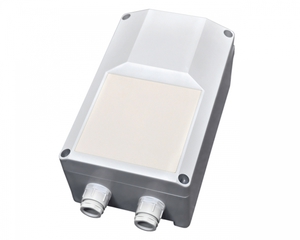What is an autotransformer, how to assemble LATRA with his own hands and the scheme
For the manufacture of laboratory autotransformer (LATR) with his own hands, many are pushing the surplus of low-quality regulators into the electricity market. You can use an instance of industrial type, truth, such samples are very large and expensive. This is why their use at home is complicated.
What is an electronic LATR?
Autotransformers are needed, to smoothly change the voltage frequency 50-60 Hz during various electrical work. They are often used, when you need to reduce or increase the AC voltage for household or construction electrical equipment.
Transformers are electrical equipment, which is equipped with several windings connected inductively. It is used to convert electrical energy by voltage or current.
By the way, widespread use of electronic LATR began 50 years ago. Previously, the device was equipped with a current-carrying contact. It was on the secondary winding. So it turned out to smoothly adjust the output voltage.
When various laboratory devices were connected, there was a variant of operative change of tension. Let's say, if desired, you could change the degree of heating of the soldering iron, adjust the speed of the electric motor, brightness of lighting and more.
Currently, LATR has various modifications. In general, he is a transformer, which converts AC voltage from one quantity to another. Such a device serves as a voltage stabilizer. Its main difference is the ability to adjust the voltage at the output of the equipment.
There are different types of autotransformers:
- single-phase;
- Three-phase.
The last type - three single-phase LATRs are installed in a single design. However, few want to become its owner. And three-phase, and single-phase autotransformers are equipped with a voltmeter and an adjusting scale.
Scope of LATR
Autotransformer is used in various fields of activity, including:
- Metallurgical production;
- Utilities;
- Chemical and petroleum industries;
- Production of machinery.
exept this, it is needed for further work: manufacture of household appliances, research of electrical equipment in laboratories, debugging and testing of equipment, creation of television receivers.
In addition, LATR is often used in educational institutions for experiments in chemistry and physics. It can even be found in the devices of some voltage stabilizers. Also used as an accessory to recorders and machines. In almost all laboratory studies in the form of a transformer using LATR, because it has a simple design and easy to operate.
Autotransformer in contrast to the stabilizer, which is used only in unstable networks and the output creates a voltage of 220V with different errors in 2-5%, gives the exact set voltage.
According to climatic parameters, the use of these devices at altitude is allowed 2000 meters, but the load current has to be reduced by 2,5% when climbing on each 500 m.
The main disadvantages and advantages of the autotransformer
The main advantage of LATR is higher efficiency, after all, only some of the power is transformed. Especially important, if the input and output voltages are slightly different.
Their disadvantage is that, that there is no electrical insulation between the windings. Although in industrial power grids, the neutral wire is grounded, so this factor is special ??will not play a role, in addition, less copper and steel for cores are used for windings, Consequently, less weight and dimensions. As a result, you can save well.
The first option is a voltage change device
If you are a novice electrician, it is better to try to make a simple model of LATRA first, which will be regulated by a voltage device - from 0-220 volt. According to this scheme, the autotransformer has a power - from 25-500 W.
To increase the power of the controller to 1,5 kw, requires VD thyristors 1 and 2 put on radiators. Connect them in parallel with the load R 1. These thyristors pass current in opposite directions. When the appliance is connected to the mains, they are closed, and capacitors C 1 and 2 begin to charge from the resistor R 5. They also, if necessary, change the amount of voltage during loading. In addition, this variable resistor together with the capacitors forms a phase-shifting circuit.
This technical solution makes it possible to use two half-cycles of alternating current. As a result, full power is used for loading, not half.
The only drawback of the scheme is, that the form of alternating voltage during loading due to the specifics of thyristors is not sinusoidal. All this leads to network interference. To fix the problem in the circuit, it is enough to build filters in series with the load. They can be removed from a broken TV.
The second option is a voltage regulator with a transformer
Does not cause interference in the network and gives a sinusoidal voltage device, collect harder than the previous one. LATR, whose circuit has a biopolar VT 1, in principle, you can also do it yourself. Moreover, the transistor serves as a regulating element in the device. The power in it depends on the load. It works as a rheostat. This model allows you to change the operating voltage not only under reactive loads, but also active.
However presented ??the circuit of the autotransformer is also not ideal. Its downside is, a functioning control transistor emits a lot of heat. To eliminate the shortcoming you will need a powerful heat sink, the area of which is not less than 250 cm?.
In this case, the transformer T is used 1. It should have a secondary voltage of about 6-10 In and power approx 12-15 W. Diode bridge VD 6 carries out rectification of current, which then passes to the transistor VT 1 in any half-life through VD 5 and VD 2. The base current of the transistor is regulated by a variable resistor R 1, thereby changing the characteristics of the load current.
Voltmeter PV 1 control the voltage at the output of the autotransformer. It is used to calculate the voltage from 250-300 V. If you need to increase the load, then VD diodes should be replaced 5 VD 2 and transistor VD 1 on more powerful. Naturally, this will be followed by expanding the area of the radiator.
As you can see, collect LATR with your own hands, perhaps, you only need to have a little knowledge in this area and buy all the necessary materials.



